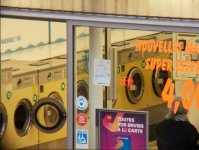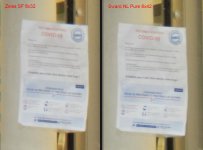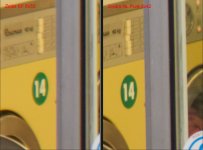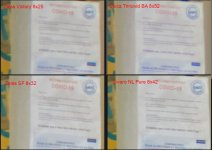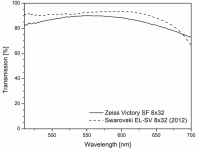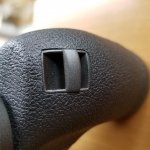Finally had a chance to read through this thread, I really enjoyed your review and once again I find we have extremely similar methods and preferences. A few assorted thoughts in response to things which caught my eye....
Color cast is a topic I've discussed / argued about a lot on these forums, and I am particularly sensitive to it. It's a difficult subject to discuss, because one person's "tint" is another's "cast" is another's "emphasis". The terms are mushy and our subjective perceptions quite different.
I often find that color balance isn't as obvious at first, and only after using them in various habitats and lighting conditions can you nail it down. And with good binoculars, where these shifts from neutrality are relatively slight, it's often only REALLY obvious in direct A/B comparison.
As an example, I have two Ultravid HD (not plus), 8x32 and 7x42. I find both to appear quite neutral and vivid in good light if I don't study things too critically. But if I do careful comparisons I can see the relative emphasis of the warm end of the spectrum and the slight dingy yellowing of deep blues. But for the most part, just using them and not thinking about it, it's not an issue. But compare them A/B with quick switches vs a "green" binocular like the Conquest HD and the departure from neutrality (for both) is strikingly obvious to me.
As a common reference point, I'm curious if you could compare the color of the 32mm Conquest HD to the SF? And have you tried the 8x25 Victory? These are binoculars I've owned recently and know well. I would describe the 32mm Conquest HD as having a slight green "cast", but not the 8x25 Victory which is more netural, vivid and transparent. With the 8x25 Victory, even though I can detect a slight bias towards coolness (blue/green), it doesn't rise to the level of a "color cast" to me. Perhaps what we are really describing is how closely they adhere to neutrality given our particular eye/brain thresholds, and once?
I also find that the Conquests are extremely crisp, in a "technical" way as you described, but flatter and less "emotional" than the Leica Ultravid saturated warmth. It is my pet theory that the "Zeiss hump" transmission with a peak in the center (500-600nm) and rolling off on both ends (deep blue is worse than Swaro and deep red is worse than Leica) improves the "crispness" and "technical" feel but also yields the slightly "flatter" look.
These are subtle things that are difficult to describe well.
On the SF vs EL, I was surprised to see Gijs' measurements showing the EL SV to have a pretty sizable transmission advantage over the SF. Usually the comparable Zeiss vs Swaro has the Zeiss peaking a little hire in the center of the spectrum, with the Swaro pulling ahead as it heads towards the blue, but the Swaro EL SV is well ahead of the 8x32 SF pretty much across the spectrum. That's clearly why people are reporting the SV to be more brilliant, but I find the just-OK transmission of the SF to be surprising considering some of the glowing praise (and Zeiss's reputation for very high transmission with the FL and HT series).
View attachment 1357946




